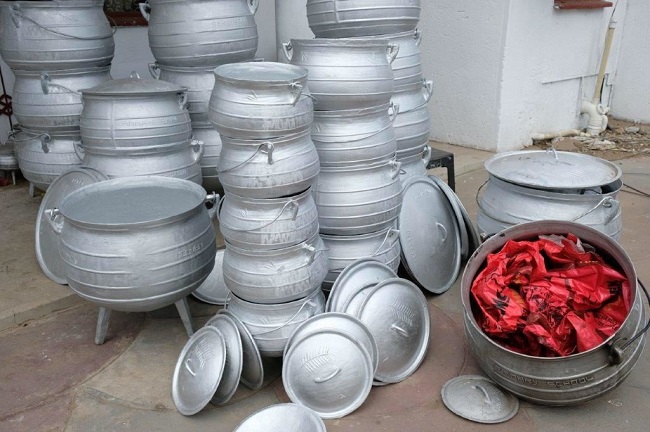
Study Finds Alarming Lead Contamination In Ghana’s Popular Metal Cookware ‘Dades3n’2 min read


Ghana’s popular metal Cookware ‘Dades3n’
A groundbreaking study spanning four regions in Ghana has unveiled alarming levels of lead contamination in the widely used metal cookware known as “Dades3n.”
Conducted by the environmental NGO, Pure Earth’s Blacksmith Initiative, this Global Rapid Market screening study is the largest of its kind, shedding light on the distressing prevalence of lead in consumer goods and food originating from low and middle-income countries, with potentially far-reaching global implications.
The study findings are deeply concerning:
Metal Cookware (Dades3n): 55% of tested samples were found to contain high levels of lead.
Ceramic Cookware: 18% of samples showed lead contamination.
Children’s Toys: 14% of tested toys were found to have lead content.
Local Mascara (Cosmetics): 7% of local mascara products were found to contain lead.
The report, recently launched by the World Bank, underscores the gravity of lead exposure and its impact on cognitive development.
The report according to Adomonline.com states, “Children under 5-years old worldwide lost 765 million IQ points, those living in low and middle-income countries lost 729 million IQ points. There is an average loss of 5.9 IQ points per child, and this IQ points loss is 80% greater than the previous estimate.”
Esmond Wisdom Quansah, the Country Director for Pure Earth, emphasized the risks associated with consuming food prepared in these metallic cookware.
He stated, “What this points to is that we are not safe if you happen to be eating from any of these metallic or ‘Dades3n’ cookware; we are at risk of lead poisoning.”
Quansah further explained that the experiment was meticulously conducted multiple times to ensure accuracy and consistency.
“Our scientists have conducted what we call the leach test to determine the percentage of leach of this lead concentration in this metallic or aluminum cooking pot into the food, and we were surprised by the findings of the scientists.
“55% of the lead in this metallic cookware actually leaked into the food. The experiment was conducted six times, and the results remained consistent. This is a cause for concern for everyone, and that is why we are sharing this information with the public,” he noted.


















